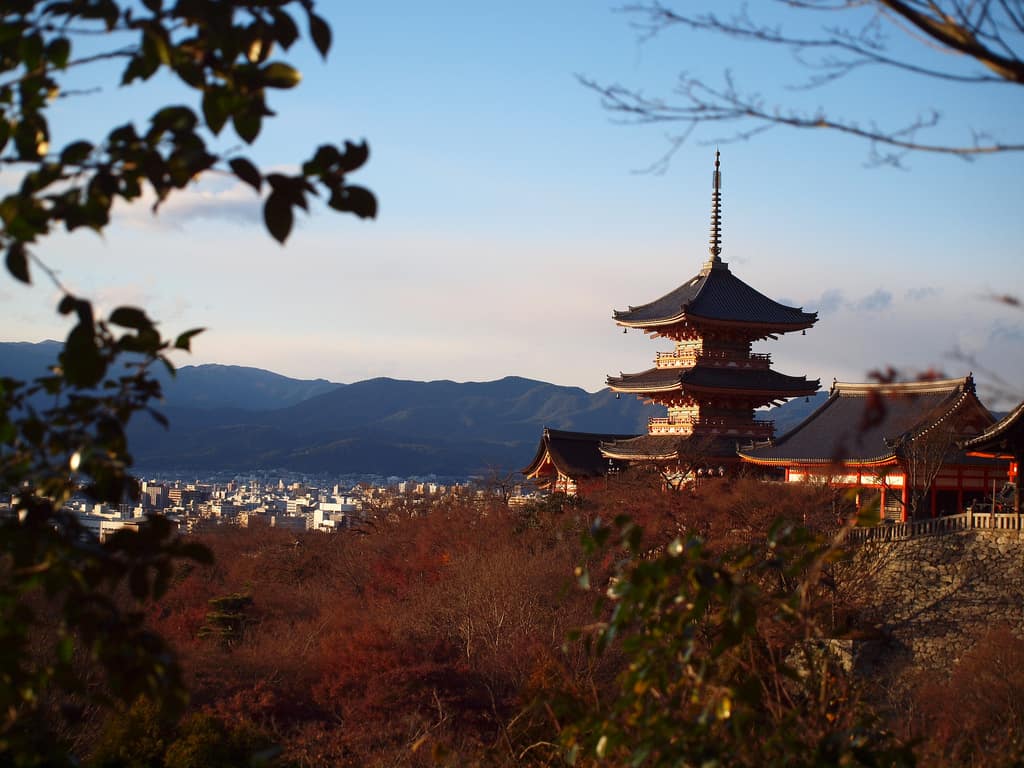Japan, a land steeped in history and tradition, is home to numerous Buddhist temples, each a serene sanctuary offering a journey into spiritual tranquility and insight. For those planning a trip to Japan, visiting these sacred sites provides not just a peek into the country’s rich cultural tapestry but also an opportunity to experience peace and contemplation amidst the hustle and bustle of modern life.
1. Kinkaku-ji (Golden Pavilion) – Kyoto
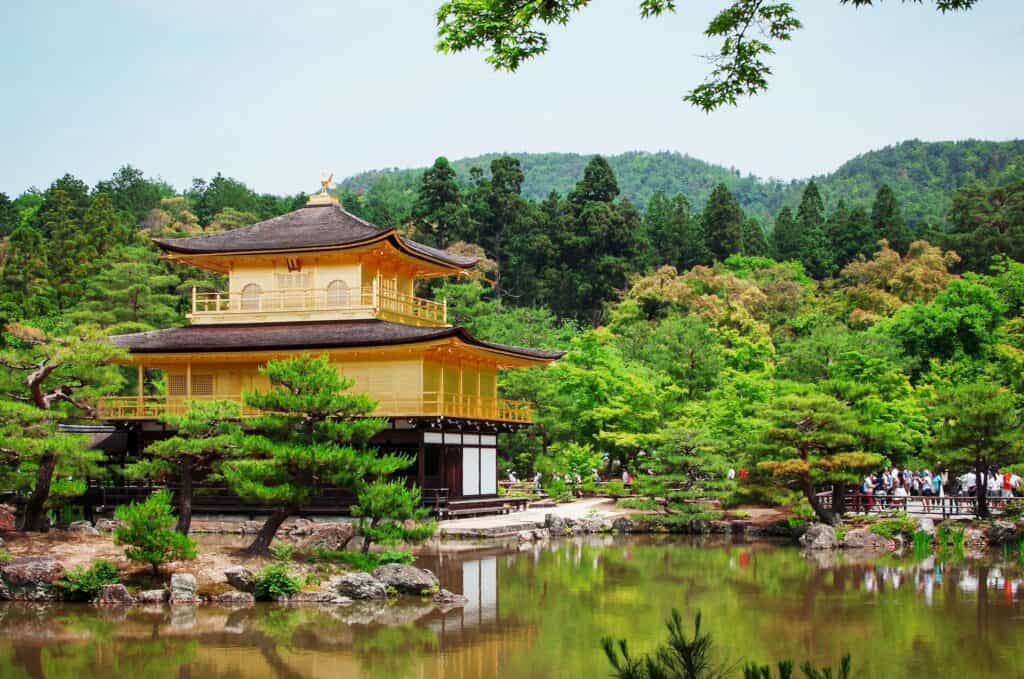
Nestled in Kyoto, the Kinkaku-ji, or the Golden Pavilion, is a symbol of elegance and harmony. The temple’s stunning golden exterior reflects shimmeringly on the surrounding pond, creating a picture-perfect scene. Roaming the exquisite gardens and exploring the fascinating history of Kinkaku-ji promises a serene and enriching experience to every visitor.
2. Senso-ji – Tokyo
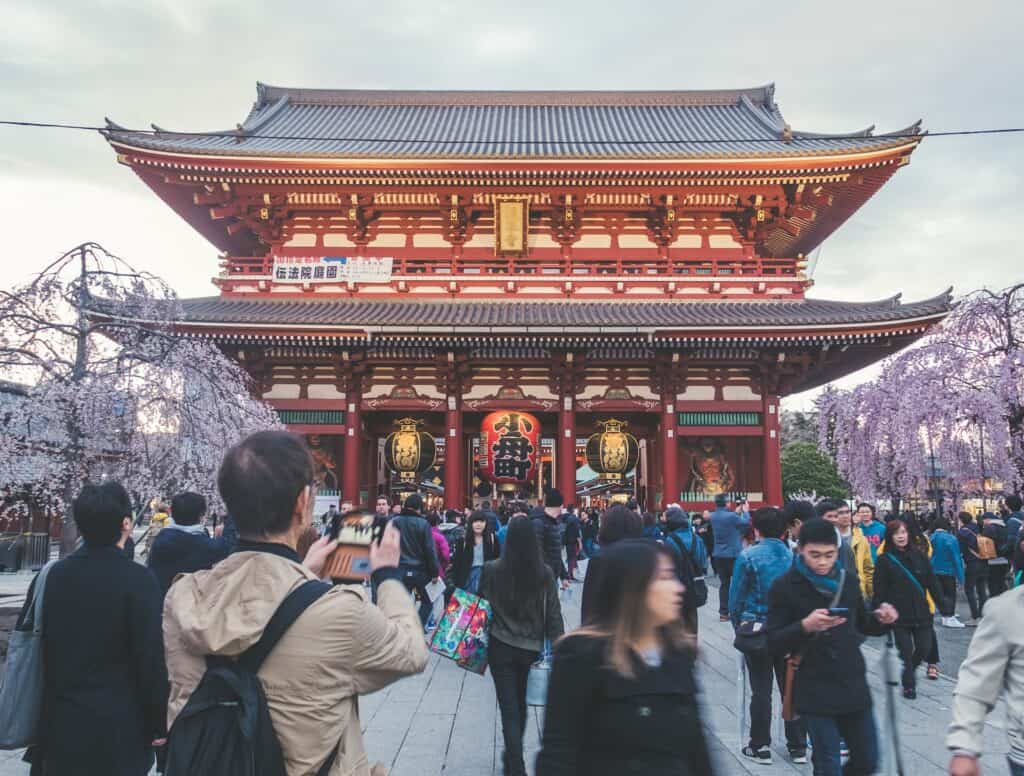
Located in Asakusa, Tokyo, Senso-ji is Tokyo’s oldest temple and a beacon of spiritual solace amidst the city’s energetic vibe. The iconic Thunder Gate, the vibrant shopping street, and the imposing main hall beckon visitors into a world where tradition and spirituality intertwine, offering a contrast to Tokyo’s technological marvels.
3. Todai-ji – Nara
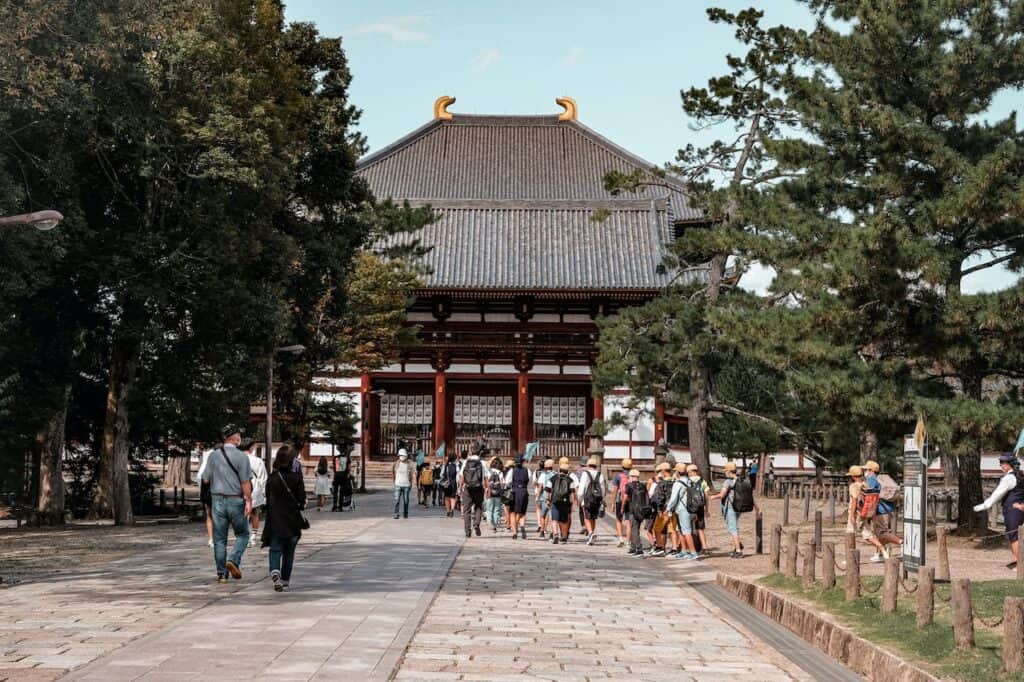
Todai-ji, located in the picturesque city of Nara, is home to the imposing bronze statue of Buddha Vairocana, a remarkable and spiritually uplifting spectacle. Enclosed by vibrant green landscapes and the presence of gentle, free-roaming deer, this temple serves as a tranquil refuge. Visitors can immerse themselves in profound Buddhist doctrines and marvel at the intricate architectural magnificence of the expansive main hall, experiencing a harmonious blend of spirituality and natural beauty.
4. Ryoan-ji – Kyoto
Ryoan-ji, located in the historic city of Kyoto, is renowned for its minimalist Zen rock garden, symbolizing purity and calm. The precise arrangement of rocks amidst flawlessly raked gravel provides a sanctuary for visitors to reflect deeply upon Zen Buddhism’s core principles, offering a serene haven for thoughtful introspection and deeper bonding with nature’s essence, echoing the whispers of tranquility and spiritual harmony.
5. Kiyomizu-dera – Kyoto
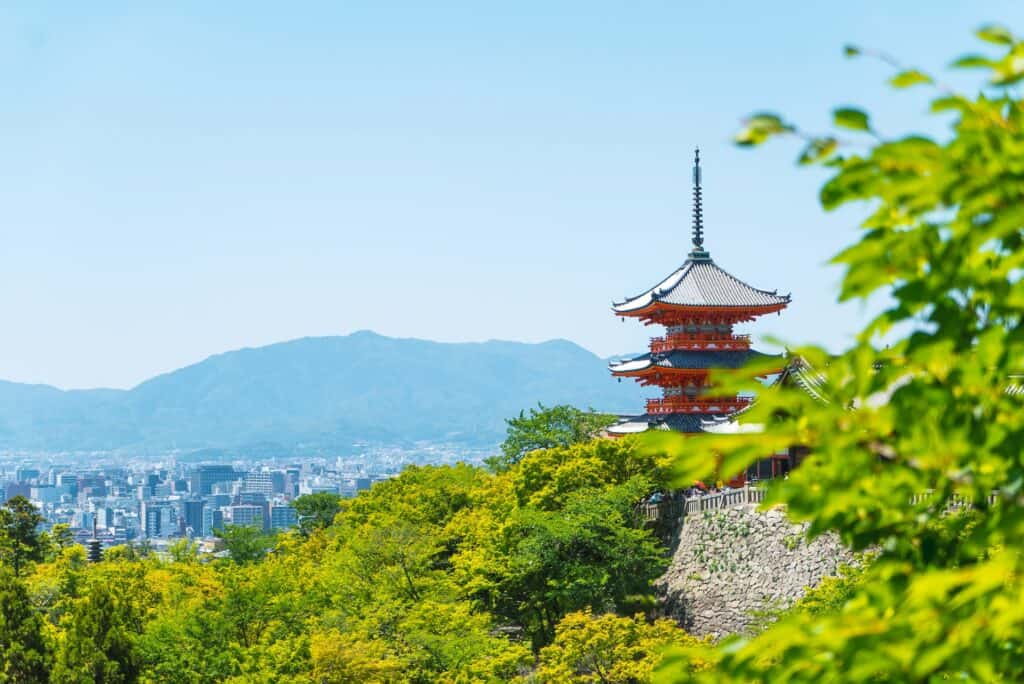
Kiyomizu-dera, located on Kyoto’s scenic hills, provides sweeping views of the city below. Its wooden terrace and the crystalline waters of the Otowa Waterfall come together in a harmonious blend, establishing a serene environment where visitors can undergo spiritual purification and wander through distinct halls, each venerating different deities, experiencing peace and divinity.
Navigating Through Trains in Japan:
Japan trains are a convenient and efficient way to explore the myriad of temples scattered across the country. The extensive rail network connects major cities and remote regions, making it easy for travelers to access these spiritual havens. Purchasing a Japan Rail Pass can offer unlimited travel and flexibility to those wishing to traverse the various landscapes of the country in search of spiritual enlightenment.
6. Hase-dera – Kamakura
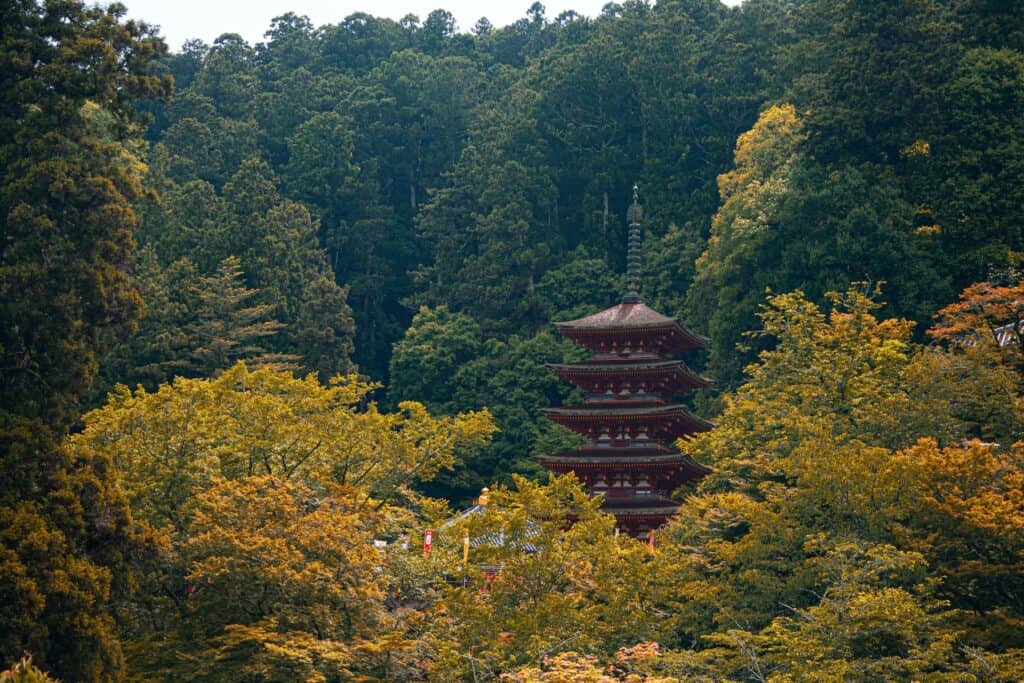
Hase-dera, resting in the charming coastal town of Kamakura, stands as a tranquil haven imbued with spiritual symbols and peaceful landscapes. The temple shelters a monumental wooden statue of Kannon, the merciful goddess, enveloped by exquisite gardens and tranquil ponds, crafting a serene ambiance ideal for contemplation, meditation, and prayer, offering visitors a respite from the hustle and allowing them to connect with their spiritual selves amidst natural beauty.
7. Enryaku-ji – Mount Hiei
Located atop the revered Mount Hiei, Enryaku-ji stands as a testament to the Tendai Buddhist tradition, with its collection of intricately designed temples. Embraced by the mountain’s tranquil ambiance, this spiritual haven provides a gateway for visitors. They can deeply connect with Buddhist philosophies, appreciating the intricate rituals and the serene rhythms of monastic existence amidst nature’s embrace.
8. Itsukushima Shrine – Miyajima
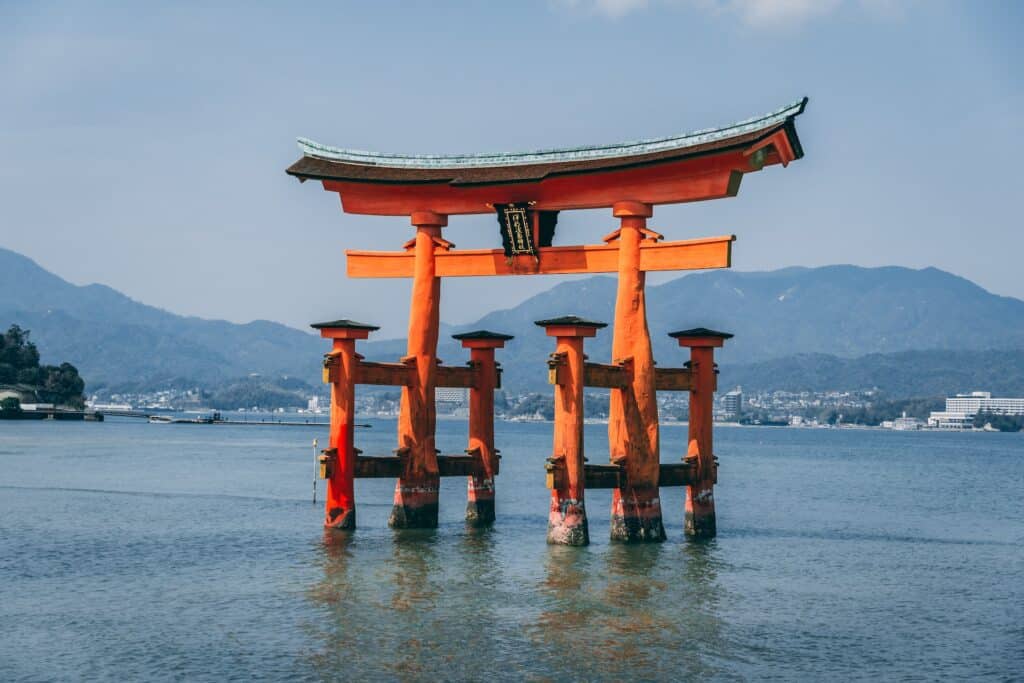
Although primarily a Shinto shrine, Itsukushima on Miyajima Island also features Buddhist elements, creating a synthesis of Japan’s main religions. The iconic floating torii gate and the harmonious blend of natural and spiritual elements make it a unique and peaceful retreat.
Conclusion:
Visiting Japan’s Buddhist temples provides a journey into the spiritual heart of the country, offering moments of peace, reflection, and a deeper understanding of Japan’s cultural and religious fabric. These temples, with their timeless wisdom, serene atmospheres, and architectural elegance, are sanctuaries where the spiritual and the natural world coalesce, inviting every visitor to pause, breathe, and contemplate the deeper aspects of life.
For anyone looking to explore the essence of Japanese spirituality, these sacred sites are more than just places of worship; they are gateways to understanding the harmonious balance between humans and nature, the ephemeral beauty of existence, and the profound teachings of Buddhism.
This expedition through Japan’s serene temples not only unfolds the country’s spiritual and cultural richness but also offers solace and enlightenment to those seeking refuge from the frantic pace of modern life. Whether a spiritual seeker, a history enthusiast, or a curious traveler, the Buddhist temples of Japan stand as timeless treasures, whispering tales of peace and wisdom to every soul that steps within their sacred grounds.
